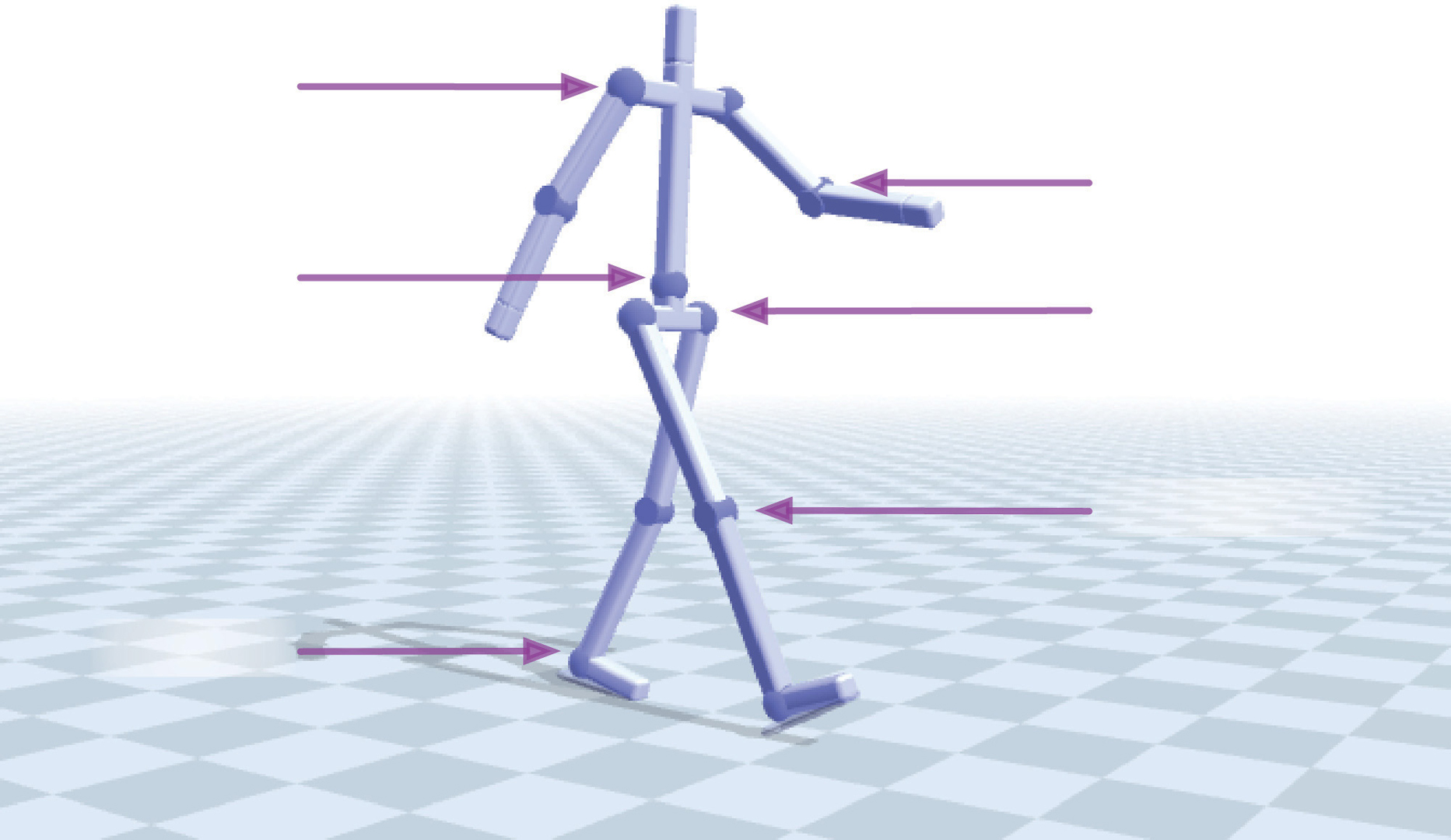“Composite Control of Physically Simulated Characters” by Muico, Popović and Popovic
Conference:
Type(s):
Title:
- Composite Control of Physically Simulated Characters
Presenter(s)/Author(s):
Abstract:
A physics-based control system that tracks a single motion trajectory produces high-quality animations, but does not recover from large disturbances that require deviating from this tracked trajectory. In order to enhance the responsiveness of physically simulated characters, we introduce algorithms that construct composite controllers that track multiple trajectories in parallel instead of sequentially switching from one control to the other. The composite controllers can blend or transition between different path controllers at arbitrary times according to the current system state. As a result, a composite control system generates both high-quality animations and natural responses to certain disturbances. We demonstrate its potential for improving robustness in performing several locomotion tasks. Then we consolidate these controllers into graphs that allow us to direct the character in real time.
References:
- Burridge, R. R., Rizzi, A. A., and Koditschek, D. E. 1999. Sequential composition of dynamically desterous robot behaviours. Int. J. of Robot. Res. 18, 6, 534–555.
- Coros, S., Beaudoin, P., and van de Panne, M. 2009. Robust task-based control policies for physics-based Characters. ACM Trans. Graph. 28, 5.
- Coros, S., Beaudoin, P., Yin, K., and van de Panne, M. 2008. Synthesis of constrained walking skills. ACM Trans. Graph. 27, 5, 113:1–113:9.
- da Silva, M., Abe, Y., and Popović, J. 2008. Interactive simulation of stylized human locomotion. ACM Trans. Graph. 27, 3, 82:1–82:10.
- da Silva, M., Durand, F., and Popović, J. 2009. Linear bellman combination for control of character animation. ACM Trans. Graph. 28, 3, 82:1–82:10.
- Erez, T. and Smart, W. 2007. Bipedal walking on rough terrain using manifold control. In Proceedings of the International Conference on Intelligent Robots and Systems (IROS). 1539–1544.
- Faloutsos, P., van de Panne, M., and Terzopoulos, D. 2001. Composable controllers for physics-based character animation. In Proceedings of ACM SIGGRAPH. Annual Conference Series. 251–260.
- Fleming, W. H. 1978. Exit probabilities and optimal stochastic control. Appl. Math. Optimiz. 4, 329–346.
- Hodgins, J. K. and Pollard, N. S. 1997. Adapting simulated behaviors for new characters. In Proceedings of SIGGRAPH. Annual Conference Series. 153–162.
- Hodgins, J. K., Wooten, W. L., Brogan, D. C., and O’Brien, J. F. 1995. Animating human athletics. In Proceedings of ACM SIGGRAPH. Annual Conference Series. 71–78.
- Holland, C. 1977. A new energy characterization of the smallest eigenvalue to the schrödinger equation. Comm. Pure Appl. Math. 30, 755–765.
- Laszlo, J. F., van de Panne, M., and Fiume, E. L. 1996. Limit cycle control and its application to the animation of balancing and walking. In Proceedings of SIGGRAPH. Annual Conference Series. 155–162.
- Lee, Y., Kim, S., and Lee, J. 2010. Data-Driven biped control. ACM Trans. Graph. 29, 4.
- Muico, U., Lee, Y., Popović, J., and Popović, Z. 2009. Contact-aware nonlinear control of dynamic characters. ACM Trans. Graph. 28, 3, 81:1–81:9.
- Pollard, N. S. and Behmaram-Mosavat, F. 2000. Force-Based motion editing for locomotion tasks. In Proceedings of the IEEE International Conference on Robotics and Automation (ICRA). 663–669.
- Raibert, M., Blankespoor, K., Nelson, G., and Playter, R. 2008. Bigdog, the rough-terrain quadruped robot. In Proceedings of the International Federation of Automatic Control.
- Raibert, M. H. and Hodgins, J. K. 1991. Animation of dynamic legged locomotion. In Proceedings of SIGGRAPH. Annual Conference Series. 349–358.
- Schittkowski, K. 2005. QL: A Fortran Code for Convex Quadratic Programming — User’s Guide Version 2.11. Department of Mathematics, University of Bayreuth.
- Sok, K. W., Kim, M., and Lee, J. 2007. Simulating biped behaviors from human motion data. ACM Trans. Graph. 26, 3, 107:1–107:9.
- Todorov, E. 2009a. Compositionality of optimal control laws. In Advances in Neural Information Processing Systems (NIPS). Vol. 22. 1856–1864.
- Todorov, E. 2009b. Efficient computation of optimal actions. In Proceedings of the National Acad. Sci. 106, 11478–11483.
- Wooten, W. L. and Hodgins, J. K. 2000. Simulating leaping, tumbling, landing and balancing humans. In Proceedings of the International Conference on Robotics and Automation (ICRA), 656–662.
- Ye, Y. and Liu, C. K. 2010. Optimal feedback control for character animation using an abstract model. ACM Trans. Graph. 29, 4.
- Yin, K., Coros, S., Beaudoin, P., and van de Panne, M. 2008. Continuation methods for adapting simulated skills. ACM Trans. Graph. 27, 3, 81:1–81:7.
- Yin, K., Loken, K., and van de Panne, M. 2007. SIMBICON: Simple biped locomotion control. In Proceedings of ACM SIGGRAPH: ACM SIGGRAPH 2007 Papers. 105.
- Zordan, V. B. and Hodgins, J. K. 2002. Motion capture-driven simulations that hit and react. In Proceedings of the Symposium on Computer Animation (SCA). 89–96.




